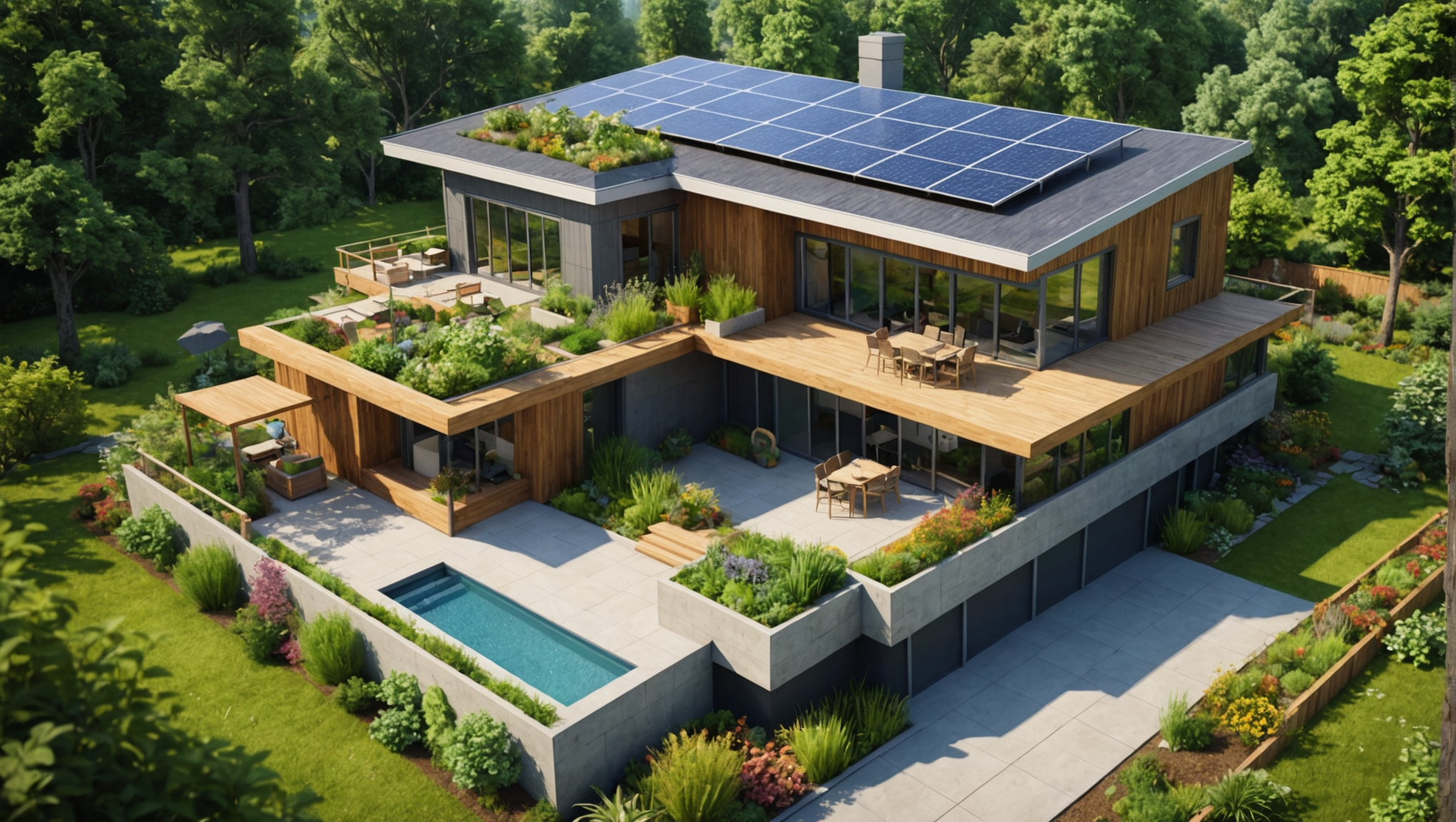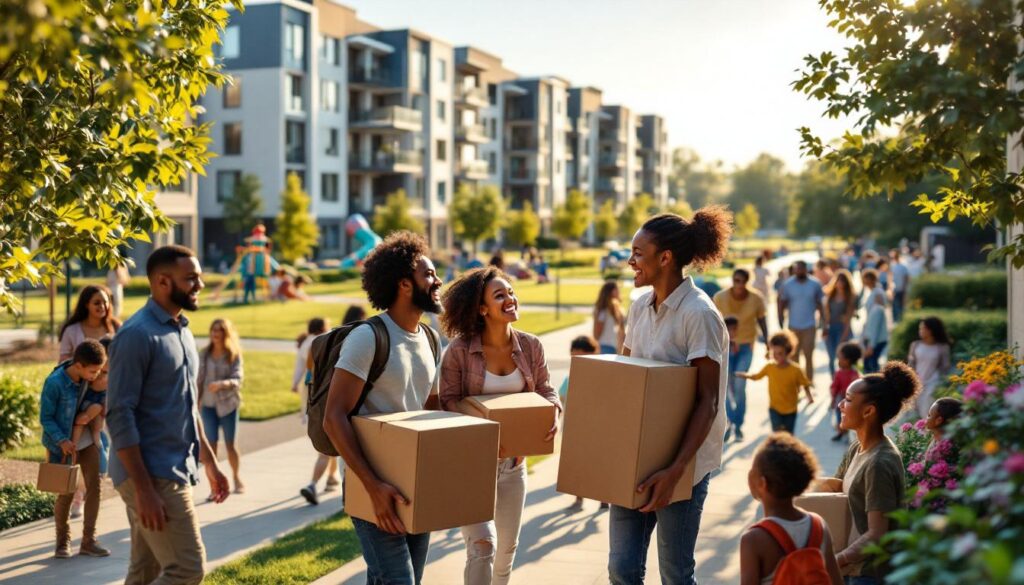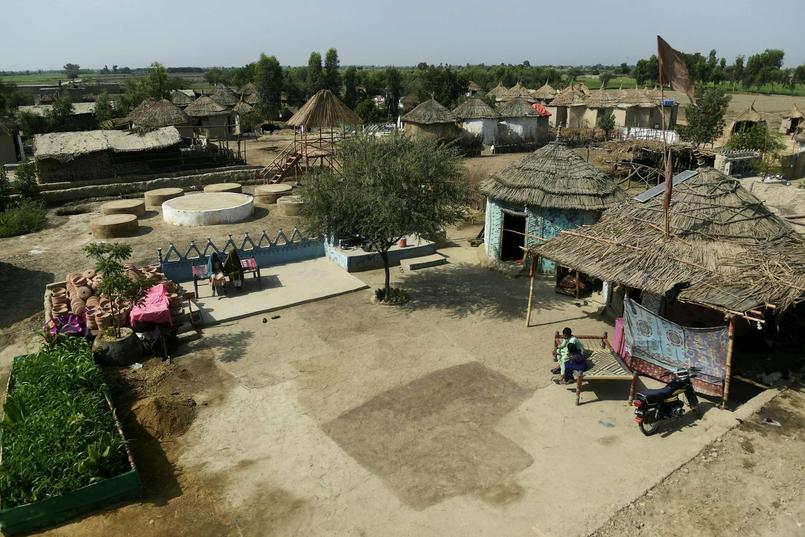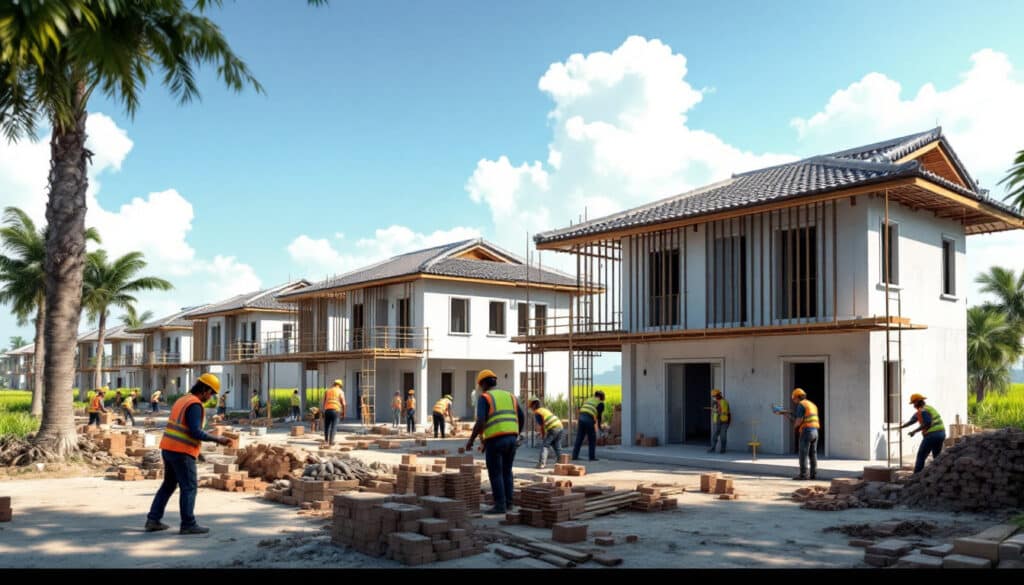In a context where environmental issues are taking on unprecedented proportions, eco-construction appears to be a tangible response to the challenges of our time. Building sustainably is no longer limited to an aesthetic choice, but becomes a real necessity to preserve our planet and improve our daily lives. Eco-construction is defined as a set of methods and practices aimed at designing buildings that minimize their ecological impact while guaranteeing the well-being of their occupants.
The principles of this approach are based on the use of ecological materials, reducing energy consumption and respecting natural resources. She seeks to create energy efficient homes having a weak carbon footprint, which not only contributes to the fight against climate change, but also improves health residents.
By adopting eco-construction, we discover a multitude of advantages, including the sustainability of infrastructure, reduced energy bills, and increased thermal comfort. Beyond the ecological benefits, this discipline promotes a more respectful and responsible lifestyle, inviting everyone to rethink their relationship with built space.

L’eco-construction represents an innovative approach that reinvents the way we think and build. This method focuses on creating buildings and habitats that minimize environmental impact while maximizing comfort and sustainability. This concept is part of a dynamic of ecological transition, where each architectural and material choice is considered to guarantee the lowest possible carbon footprint.
Table of Contents
ToggleThe fundamental principles of eco-construction
At the heart of eco-construction are principles that guide each stage of the design and construction of buildings. Among these principles, we can mention the sustainability, the choice of ecological materials, energy management, and preservation of natural resources.
Sustainability is essential, because it aims for the longevity of constructions and their ability to meet the needs of present and future generations. This involves designing buildings that do not require frequent renovations or demolitions, thereby saving valuable resources. At the same time, the use of ecological materials, often from renewable resources, helps to reduce the environmental impact of construction. These materials, such as wood, mud bricks or natural insulators, are often healthier for occupants and contribute to better indoor air quality.
In terms of energy management, eco-construction strives to construct buildings that consume little energy throughout their life cycle. This means integrating smart energy systems, such as solar panels, rainwater harvesting systems and other technologies to reduce consumption. Finally, the preservation of natural resources is a priority, involving strategies such as reuse and recycling of existing materials.
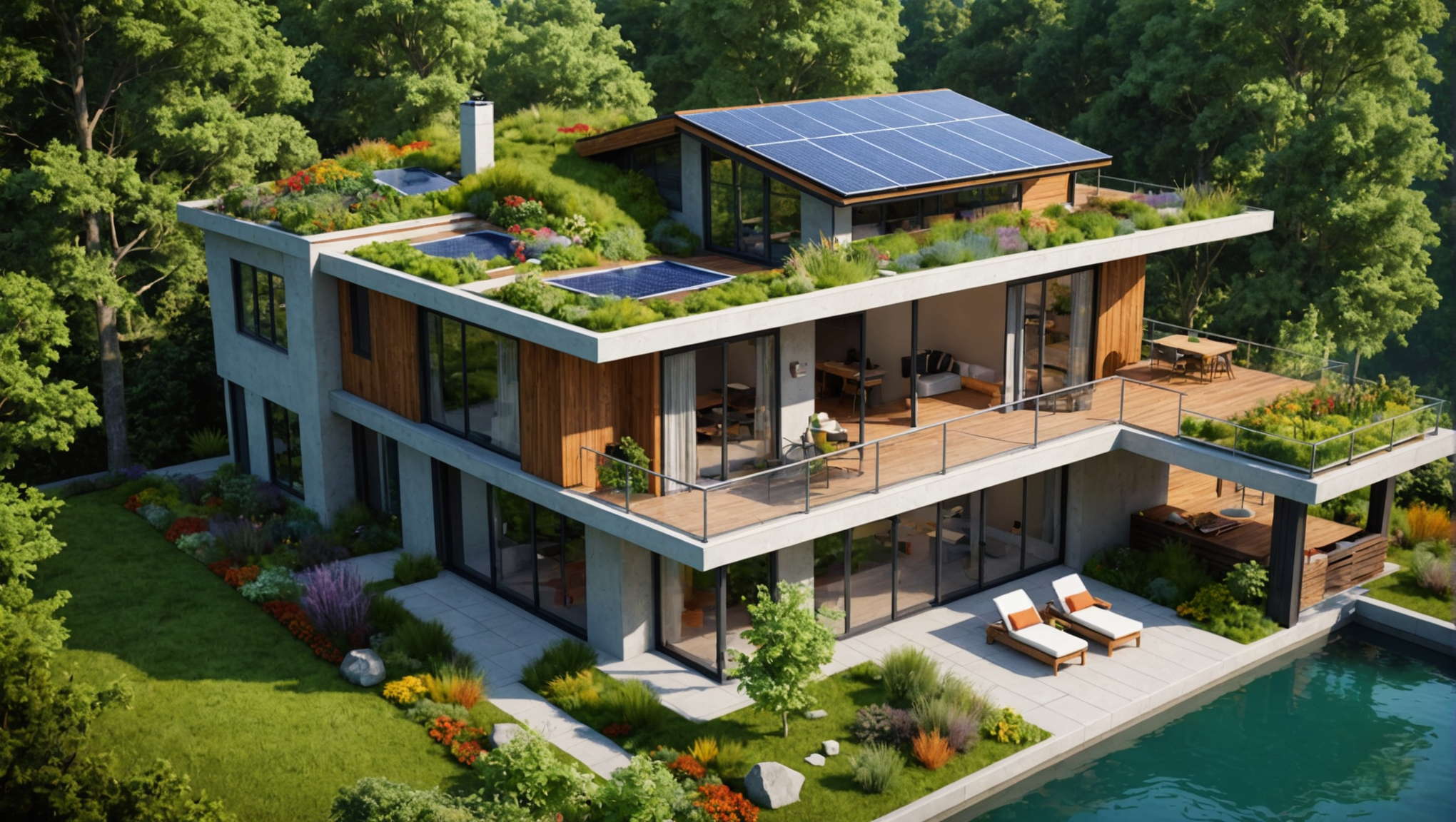
The advantages of eco-construction: a legacy for tomorrow
The benefits of eco-construction go far beyond simply reducing environmental impacts. By reducing theecological footprint of a home, we also improve the health and well-being of its occupants. For example, spaces built according to eco-construction standards often offer a thermal comfort optimal, thanks to efficient insulation which preserves heat in winter and coolness in summer.
Another undeniable advantage is the reduction of energy costs. By optimizing energy efficiency, homeowners can make substantial savings on their energy bills in the long term. In addition, sustainable buildings can stand out in the real estate market, becoming valuable assets for their owner. The development of these green habitats creates a growing demand for environmentally friendly housing.
In addition, eco-construction also contributes to the fight against climate change by reducing greenhouse gas emissions. By adopting construction practices that promote the use of renewable energies and the reduction of waste, we participate in the preservation of our planet. These initiatives are part of the global Sustainable Development Goals.
Finally, eco-construction helps generate positive dynamics within communities. By building homes for a sustainable future, we promote the emergence of a healthier and more pleasant living environment. This can encourage mutual aid and solidarity between residents, helping to strengthen the social fabric.
Towards a greener future: the importance of adopting eco-construction
With the acceleration of issues linked to the degradation of our environment, theeco-construction positions itself as an essential response to these challenges. As more and more construction passes through the prism of sustainability, we are creating a collective movement towards a habitat that is more respectful of people and nature. Companies in the construction sector, as well as individuals, have a major role to play in this transformation.
The appropriation of the principles of eco-construction cannot be done without adequate training and awareness raising among market players. As a result, numerous initiatives, such as the contribution of theopening of the event on eco-construction, aim to share knowledge and successful experiences in the field. It is now crucial to look at case studies and proven practices, which can inform informed decisions for future construction projects.
To delve deeper into the subject, additional resources are available, such as the study of ecological materials or analyzes of best practices in this area, which can serve as guides for the implementation of eco-construction in various projects.
Ultimately, eco-construction is much more than a simple architectural choice; it embodies a real commitment to a sustainable future, a healthy living environment, and an economy that respects our environment. By committing to this path, we are laying solid foundations for future generations and for a preserved planet.
Biguglia : un salon BÂTÉCO pour tout savoir sur l'éco-construction https://t.co/3HyhKvvzZs
— Corse-Matin (@Corse_Matin) June 4, 2024
What is eco-construction? Eco-construction refers to a set of practices aimed at creating environmentally friendly and energy-efficient buildings, while reducing their impact on the planet.
What are the principles of eco-construction? The principles of eco-construction include the use of materials ecological, a design optimized for energy consumption and the durability of buildings over time.
What are the advantages of eco-construction? Eco-construction brings many benefits, such as reduction of greenhouse gas emissions, optimal thermal comfort and lower energy bills.
How does eco-construction contribute to the ecological transition? By adopting eco-construction practices, we are participating in a transition towards a more sustainable lifestyle by minimizing our carbon footprint and preserving natural resources.
Why choose ecological materials? The use of ecological materials reduces risks to the health of occupants and helps create a comfortable and healthy home.
What impact does eco-construction have on energy consumption? Eco-construction makes it possible to create less energy-intensive buildings, thereby reducing the energy consumption required for heating, cooling and lighting.
How can eco-construction improve the comfort of residents? Eco-responsible constructions are designed to provide a pleasant indoor environment thanks to better thermal insulation and optimized air circulation.

